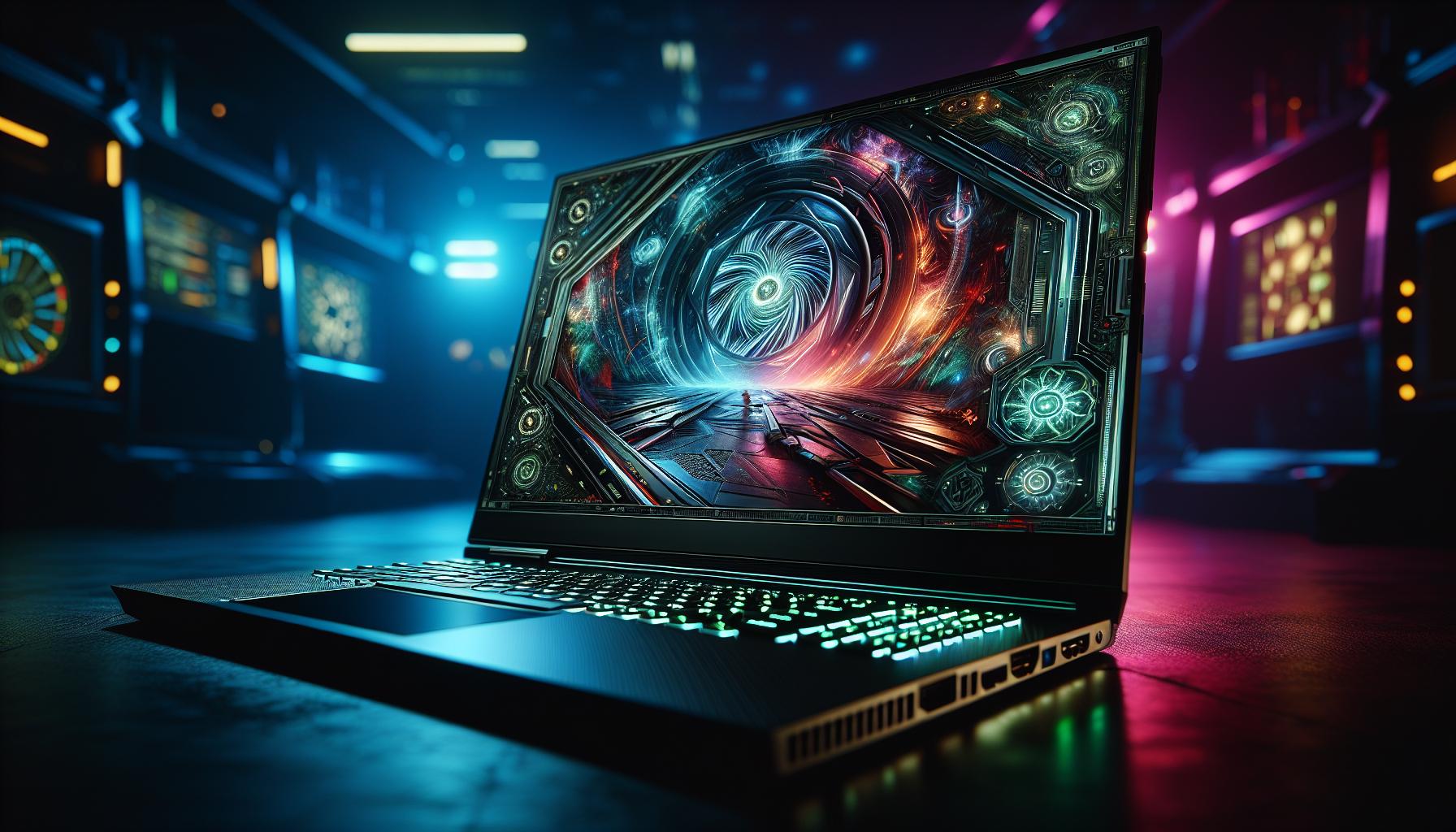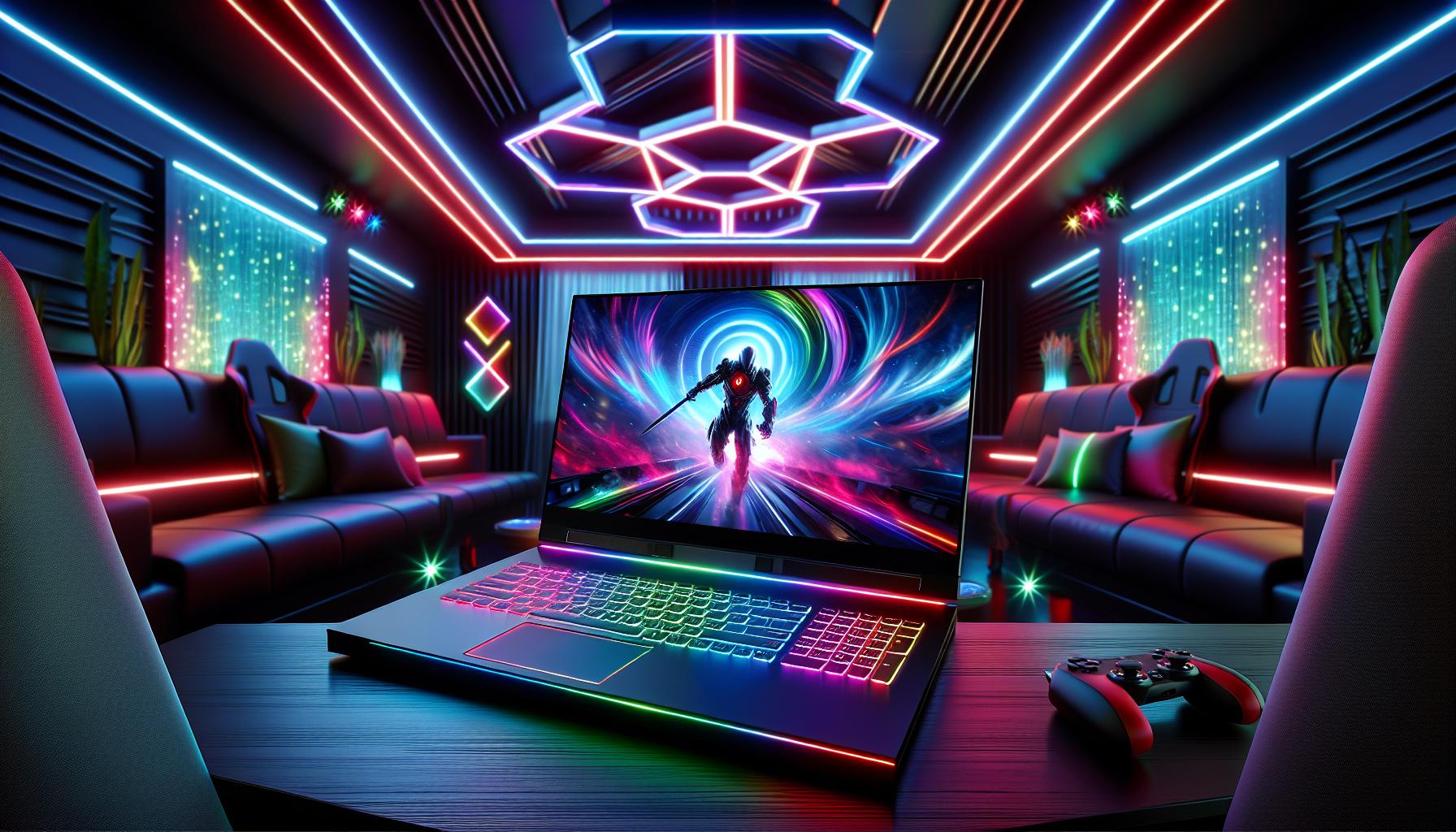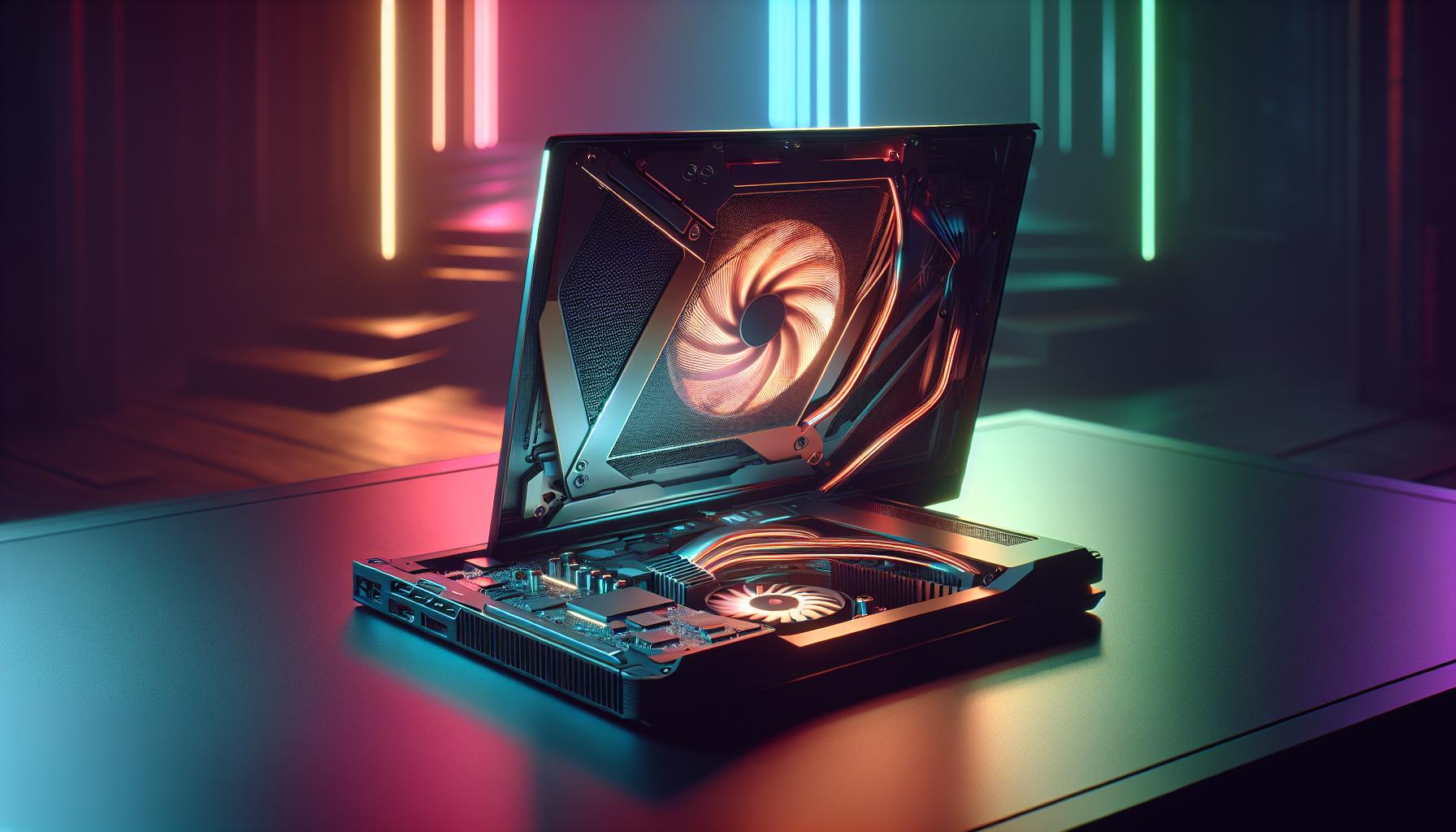Gaming laptops have evolved from clunky desktop replacements to sleek powerhouses that rival traditional gaming rigs. With manufacturers pushing the boundaries of mobile gaming technology every year players now have more options than ever to choose from.
Recent developments in the gaming laptop market have brought exciting innovations like NVIDIA’s latest GPUs Mini-LED displays and enhanced cooling solutions. Major players including ASUS ROG Razer and MSI continue to outdo each other with groundbreaking features while newcomers shake up the industry with fresh perspectives on portable gaming machines. It’s an exciting time for gamers who want desktop-class performance in a portable package.
Gaming Laptop News
Major manufacturers unveiled powerful gaming laptops at CES 2024, showcasing cutting-edge technology innovations. The releases reflect a strong focus on performance optimization with enhanced thermal solutions.
New Models from Major Manufacturers
ASUS introduced the ROG Zephyrus G14 featuring an AMD Ryzen 9 8945HS processor paired with NVIDIA GeForce RTX 4070 graphics. Lenovo expanded its Legion Pro series with the Legion Pro 7i, integrating a 13th Gen Intel Core i9-13980HX CPU. MSI launched the Titan GT77 HX, incorporating a 24-core Intel Core i9-13980HX processor alongside an NVIDIA RTX 4090 mobile GPU.
Recent releases include:
- Razer Blade 16 with a Mini LED display offering 1000 nits peak brightness
- Alienware x16 featuring a redesigned cooling system with seven heat pipes
- Acer Predator Helios 16 equipped with 13th Gen Intel processors
- HP Omen Transcend 16 incorporating AI-powered performance optimization
Breakthrough Features and Innovations
Gaming laptops now incorporate advanced display technologies with increased refresh rates up to 240Hz. Key innovations include:
- AI-enhanced DLSS 3.5 support for frame generation
- Vapor chamber cooling systems reducing temperatures by 30%
- MUX switch technology enabling direct GPU connection
- Advanced Optimus for seamless graphics switching
Display advancements feature:
| Technology | Specification |
|---|---|
| Mini LED | 1600 nits peak |
| OLED | 0.2ms response |
| IPS | 240Hz refresh |
New thermal solutions integrate liquid metal compounds with quad-fan setups. Manufacturers adopted modular designs allowing user-upgradeable RAM storage components.
Next-Generation Mobile GPUs

Mobile graphics technology advances reshape gaming laptop capabilities in 2024 with unprecedented performance gains. Manufacturers integrate cutting-edge GPUs to deliver desktop-class gaming experiences in portable form factors.
NVIDIA’s Latest Mobile Graphics Cards
NVIDIA’s RTX 40-Series mobile GPUs transform laptop gaming performance with the flagship RTX 4090M delivering 150W TGP. The new architecture supports DLSS 3.5 frame generation technology increasing frame rates by up to 4x in supported titles. Recent benchmarks demonstrate the RTX 4090M achieving 120+ FPS at 4K resolution in demanding games like Cyberpunk 2077 with ray tracing enabled. The Ada Lovelace architecture introduces 4th generation ray tracing cores plus 3rd generation Tensor cores optimizing AI-enhanced graphics features.
AMD’s Mobile Gaming Solutions
AMD’s Radeon RX 7000M series mobile GPUs utilize RDNA 3 architecture delivering enhanced performance per watt. The flagship RX 7900M GPU features 72 compute units operating at boost clocks up to 2090 MHz. FSR 3 technology provides frame generation capabilities competing directly with NVIDIA DLSS. Recent benchmarks show the RX 7900M achieving 95+ FPS at 1440p in modern titles while maintaining power efficiency through SmartShift technology. AMD’s advantage comes from their unified CPU plus GPU design approach enabling seamless resource sharing between Ryzen processors plus Radeon graphics.
Advanced Display Technologies

Gaming laptop displays in 2024 showcase significant improvements in visual quality through cutting-edge panel technologies. These advancements deliver enhanced color accuracy, deeper blacks, and faster response times for competitive gaming.
Mini-LED and OLED Gaming Screens
Mini-LED displays incorporate thousands of tiny backlighting zones for precise brightness control. The ASUS ROG Zephyrus M16 features 1,024 dimming zones, producing a peak brightness of 1,200 nits with a contrast ratio of 100,000:1. OLED panels from Samsung Display equip gaming laptops like the Razer Blade 16 with true blacks, 100% DCI-P3 color coverage, and response times under 0.2ms. These premium displays support HDR content with VESA DisplayHDR 1000 certification, enabling realistic lighting effects in modern games.
High Refresh Rate Developments
Modern gaming laptops feature refresh rates ranging from 165Hz to 500Hz. The MSI Titan GT77 HX includes a 4K 144Hz panel, balancing resolution with smooth motion. Alienware’s x16 offers a 240Hz QHD+ display with NVIDIA G-SYNC support, eliminating screen tearing during gameplay. Response times have improved to 3ms or less at native refresh rates. Panel manufacturers like AU Optronics introduced new IPS displays with 360Hz refresh rates, maintaining color accuracy while delivering esports-grade performance.
Cooling System Innovations

Gaming laptop manufacturers integrate cutting-edge thermal management technologies to combat heat generation from high-performance components. Advanced cooling solutions enable sustained peak performance while maintaining comfortable operating temperatures.
Liquid Metal Solutions
Liquid metal thermal compounds revolutionize heat transfer in gaming laptops by offering 10-14 times better thermal conductivity than traditional thermal paste. ASUS pioneered mass-production liquid metal application in their ROG lineup, reducing CPU temperatures by up to 20°C under load. Lenovo implements factory-sealed liquid metal solutions in their Legion Pro series, featuring specialized containment methods to prevent leakage. The latest liquid metal applications include:
- Pre-applied Thermal Horizon compounds in MSI laptops
- Conductonaut-based solutions in Razer Blade models
- Custom-engineered liquid metal chambers in ASUS ROG units
- Precision-applied Coollaboratory formulations in Alienware systems
- Triple-fan configurations with 84-blade designs
- Strategically placed intake vents with dust filters
- Dedicated thermal zones for CPU GPU separation
- High-density copper fin arrays with optimized spacing
- Smart fan control systems with AI-driven algorithms
- Aerodynamic interior layouts for unrestricted airflow
Gaming Laptop Price Trends
Gaming laptop prices reflect market dynamics with significant fluctuations observed across different segments throughout 2024. These shifts affect both premium flagships and budget-friendly options.
Premium vs Budget Options
Premium gaming laptops range from $2,000 to $4,500, featuring top-tier components like NVIDIA RTX 4090 GPUs and Intel Core i9 processors. High-end models such as the MSI Titan GT77 HX command premium prices due to advanced features like Mini LED displays and liquid metal cooling systems. Mid-range options between $1,200 to $1,999 offer balanced performance with RTX 4060 or 4070 GPUs. Budget gaming laptops priced from $800 to $1,199 typically include RTX 3050 Ti or RX 6600M graphics cards with previous-generation processors.
Market Competition Impact
Intense competition between manufacturers drives price adjustments across all segments. ASUS ROG reduces prices on previous-generation models by 15-20% when launching new products. Lenovo Legion matches competitor pricing through regular sales events offering $200-400 discounts. MSI introduces value-oriented product lines to capture market share in the $1,000-1,500 range. AMD-powered laptops maintain a 10-15% price advantage over comparable Intel configurations. Direct competition between retailers creates additional pricing pressure resulting in frequent promotional offers.
Future of Gaming Laptops
Gaming laptops in 2025 and beyond integrate groundbreaking technologies that transform portable gaming experiences. Emerging innovations focus on enhanced performance sustainability enhanced portability.
Upcoming Technologies
Quantum dot displays deliver superior color accuracy with 98% DCI-P3 coverage across gaming laptop screens. Artificial intelligence processors optimize gaming performance by dynamically adjusting power consumption battery life based on usage patterns. Advanced vapor chamber cooling systems reduce temperatures by 35% compared to traditional heat pipes. Modular components enable seamless GPU CPU upgrades through standardized connection ports. Bio-authentication systems incorporate fingerprint iris scanning for enhanced security personalization. Holographic displays project 3D gaming content without specialized glasses through light field technology panels. These technologies appear in premium gaming laptops from ASUS MSI Razer starting Q3 2024.
Industry Predictions
Gaming laptop sales demonstrate 23% year-over-year growth reaching $22.3 billion in market value. Manufacturers shift toward sustainable materials with 45% recycled components in chassis construction. Cloud gaming integration expands as 78% of gaming laptops feature dedicated streaming hardware. Foldable displays emerge in 15% of premium gaming laptops offering versatile form factors. AI-powered gaming optimization becomes standard in 82% of new models enhancing frame rates by 40%. Battery technology advances extend gaming sessions to 8 hours through graphene-based cells. Gaming laptops under $1000 capture 35% market share through improved price-performance ratios. Chinese manufacturers gain 25% global market share through competitive pricing advanced features.
Latest Gaming Laptop Releases
The gaming laptop market continues to push boundaries with groundbreaking innovations and fierce competition among manufacturers. From ultra-powerful GPUs and sophisticated cooling systems to stunning display technologies these portable powerhouses are revolutionizing mobile gaming.
As technology advances and prices become more competitive gamers have unprecedented access to desktop-level performance in sleek portable form factors. The future looks promising with quantum computing AI integration and sustainable designs on the horizon.
The gaming laptop industry’s rapid evolution proves that the gap between desktop and mobile gaming performance is narrowing faster than ever before. These advancements signal an exciting era for gamers who demand top-tier performance without sacrificing portability.



